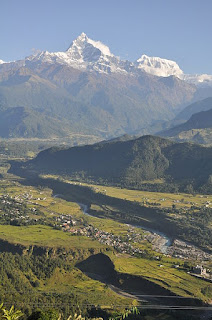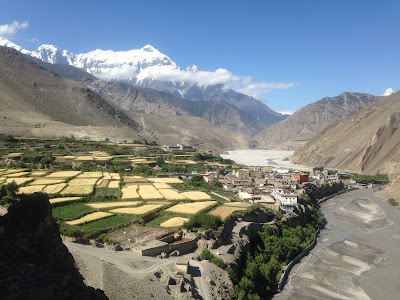Pokhara
Pokhara has become a major tourist destination in Asia mainly for adventure tourism and the base for the famous Annapurna trek. Thus, a major contribution to the local economy comes from the tourism and hospitality industry. There are two 5-star hotels and approximately 305 other hotels that includes five 3-star, fifteen 2-star and non-star hotels in the city.
Pokhara is quite a modern city, however, many medieval era temples (Barahi temple, Bindhyabasini, Bhadrakali, Sitaldevi, Gita mandir temple, Bhimsen temple) and old newari houses are still a part of the city (Bagar, Bindhyabasini, Bhairab Tole, etc.). The modern commercial city centres are at Chipledhunga (slippery stone, which is still there) and Mahendrapul (recently renamed as Bhimsen Chowk).
The city promotes two major hilltops as its viewpoints to view the city and surrounding panaroma, World Peace stupa built in 1996 across the southern shore of Phewa lake which is located northwest of the city. In February 2004, International Mountain Museum was opened for public in Ratopahiro to boost city's tourism attractions. Other museums in the city are Pokhara Regional Museum, an ethnographic museum, Annapurna Natural History Museum which houses preserved specimens of flora and fauna, and contains particularly extensive collection of the butterflies, found in the Annapurna region and Gurkha Museum which shows history of the Gurkha Soldiers.
Since 1990s Pokhara has experienced rapid urbanization and as a result service and industries sectors have increasingly contributed to the local economy overtaking the traditional agriculture. The major contributors to the economy of Pokhara are manufacturing and service sector including tourism; agriculture and the foreign and domestic remittances. Tourism, service sector & manufacturing contributes approximately 58% to the economy, remittances about 20% and the agriculture nearly 16%.




Comments
Post a Comment